European Otter
- April 1, 2024
- 0 comment
The European otter, scientifically known as Lutra lutra, is a captivating mammal indigenous to Europe. With its sleek, streamlined body and dense fur, the European otter is perfectly adapted to its semi-aquatic lifestyle. These charismatic creatures inhabit a variety of aquatic environments, including rivers, lakes, and coastal areas, where they are renowned for their playful behavior and hunting prowess. European otters primarily feed on fish but also consume amphibians, crustaceans, and small mammals. Breeding typically occurs in spring, with females giving birth to litters of two to three pups in underground dens.
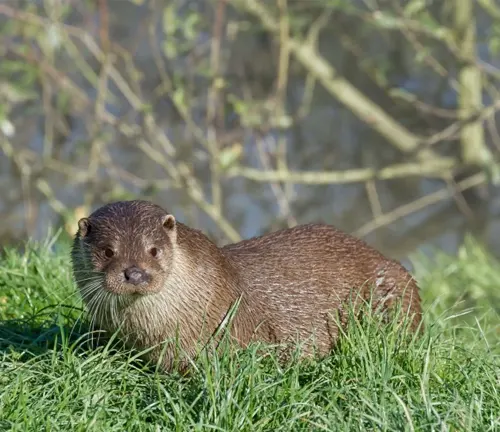
Despite facing threats from habitat loss and pollution, European otter populations have shown signs of recovery thanks to dedicated conservation efforts. These efforts focus on habitat restoration, pollution mitigation, and raising public awareness about otter conservation. As keystone species, European otters play a vital role in maintaining the health and balance of aquatic ecosystems, making their conservation imperative for the well-being of these habitats and the species that depend on them.
| Specification | Description |
|---|---|
| Scientific Name | Lutra lutra |
| Average Length | 55 to 95 centimeters |
| Fur Color | Brown to almost black |
| Habitat | Rivers, lakes, coastal areas, marshes |
| Distribution | Europe, from the British Isles to Russia |
| Diet | Primarily fish, supplemented by amphibians, crustaceans, and small mammals |
| Activity | Nocturnal and diurnal, active both day and night |
| Reproduction | Breeding occurs in spring, with litters of 2-3 pups |
| Lifespan | Typically 8 to 10 years in the wild |
| Conservation Status | Previously endangered, now showing signs of recovery |
A Master of Rivers and Streams
The European otter, scientifically known as Lutra lutra, is a fascinating mammal native to Europe. Renowned for its playful nature and sleek appearance, this semi-aquatic creature is a symbol of wilderness and resilience.
Physical Characteristics
European otters possess a distinctive set of physical characteristics that make them well-suited for their semi-aquatic lifestyle. These mammals have long, streamlined bodies with short legs and webbed feet, ideal for navigating through water with ease. Their fur, consisting of two layers, provides excellent insulation against the cold waters they inhabit.
Fur and Adaptations
The fur of European otters is one of their most notable features. It comprises two layers: a dense, water-repellent outer coat and a soft undercoat. This unique adaptation allows them to stay warm and dry while swimming and diving in chilly rivers and lakes. The outer coat helps repel water, keeping their skin dry, while the undercoat provides insulation, trapping a layer of air close to their body to retain heat.

In addition to their fur, European otters have several other adaptations that aid in their aquatic lifestyle. Their streamlined bodies reduce drag in the water, allowing them to swim swiftly and maneuver efficiently while hunting prey. Their long, muscular tails act as rudders, providing balance and propulsion as they navigate through currents. Furthermore, their webbed feet aid in swimming, functioning like paddles to propel them forward with precision and agility.
Habitat and Distribution
European otters are highly adaptable mammals that inhabit a variety of aquatic environments across Europe. From the British Isles to Russia, these charismatic creatures can be found in a diverse range of habitats, including rivers, lakes, coastal areas, and marshes. Their distribution spans across the continent, where they play a vital role in maintaining the health of aquatic ecosystems.
Preferred Habitats
While European otters can thrive in various aquatic habitats, they tend to prefer clean, unpolluted waterways with abundant vegetation and suitable shelter. Rivers and streams with ample fish stocks and dense riparian vegetation are particularly favored by otters for hunting and breeding.
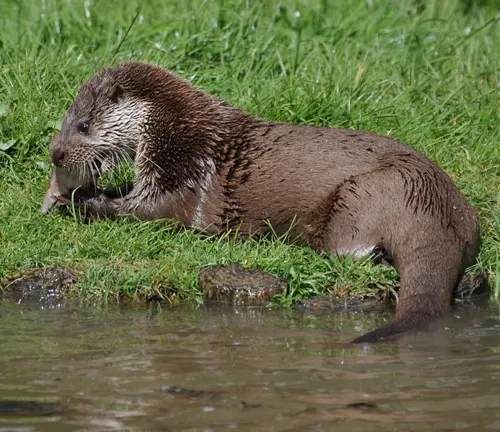
Otters establish territories along riverbanks and coastlines, marking their boundaries with scent to deter intruders. They often build dens, known as holts, in secluded areas along the water’s edge, using vegetation and debris to create secure shelters for resting and raising their young.
In addition to rivers and lakes, European otters may also inhabit coastal areas such as estuaries and saltmarshes, where they can find a rich diversity of prey and suitable den sites. These semi-aquatic mammals are known to venture into both freshwater and saltwater environments, depending on the availability of food and habitat resources.
Behavior and Diet
European otters are highly adaptable mammals known for their playful behavior and keen hunting skills. Active both day and night, these semi-aquatic creatures spend much of their time foraging for food along rivers, lakeshores, and coastal areas. Their diet primarily consists of fish, although they also consume a variety of other aquatic prey, including amphibians, crustaceans, and small mammals.
Hunting Techniques
European otters are skilled hunters, employing a variety of techniques to catch their prey underwater. Their hunting strategies are a testament to their agility, intelligence, and adaptability in aquatic environments.

One of the most common hunting techniques used by European otters is stalking. They stealthily approach their prey, often moving slowly and cautiously through the water to avoid detection. Once within striking distance, otters use their sharp claws and strong jaws to seize their prey with precision and speed.
Another hunting technique employed by European otters is diving. These mammals are adept swimmers and can remain submerged for several minutes while hunting underwater. They use their keen senses of sight, smell, and touch to locate prey, relying on their acute vision to spot movement and detect the presence of fish in murky waters.
European otters also use their dexterous paws to manipulate objects and capture prey. They may use their forelimbs to grasp and manipulate rocks or vegetation, flushing out hidden prey from crevices or burrows. Their sensitive whiskers, known as vibrissae, help them detect subtle changes in water currents and locate prey in low visibility conditions.
Reproduction and Life Cycle
European otters typically breed in the spring, with mating occurring between February and April. After a gestation period of approximately 60 to 86 days, females give birth to litters of two to three pups on average, although litter sizes can vary. The birth usually takes place in underground dens, known as holts, located along riverbanks or in other secluded areas.
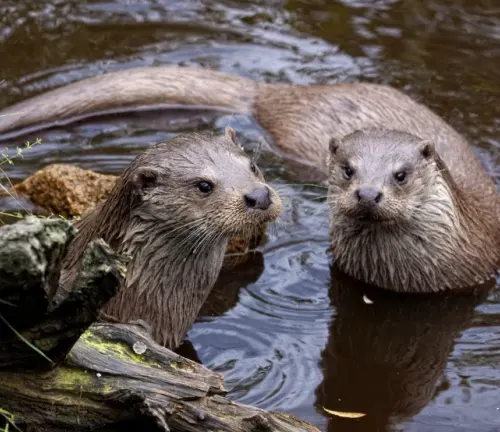
The newborn otter pups are blind, deaf, and completely dependent on their mother for care and nourishment. The mother provides dedicated maternal care, nursing her young and keeping them warm and protected within the den. She may move her pups to different locations within the den to ensure their safety and comfort.
As the otter pups grow, they gradually develop their senses and motor skills. They begin to open their eyes after about four to five weeks and start venturing out of the den under their mother’s watchful eye. The mother continues to nurse and groom her pups, teaching them essential survival skills such as swimming, diving, and hunting.

Maternal Care
Maternal care is essential for the survival of young European otters during the early stages of their life cycle. Female otters provide dedicated care to their offspring, ensuring they receive adequate nourishment, warmth, and protection within the den.
The mother otter nurses her young with rich, fatty milk, providing essential nutrients for their growth and development. She also keeps the den clean and free from debris, creating a safe and hygienic environment for her pups to thrive.
In addition to nursing, the mother otter teaches her pups important life skills, such as swimming, diving, and hunting. She demonstrates hunting techniques and encourages her young to practice these skills through play and exploration.
Conservation Status
The conservation status of European otters has seen fluctuations over the years, reflecting the impact of human activities on their populations. Once widespread across Europe, otter populations experienced significant declines during the 20th century due to habitat loss, pollution, and hunting. However, concerted conservation efforts in recent decades have led to some recovery in otter populations, particularly in regions where habitat restoration and pollution control measures have been implemented. Despite this progress, European otters still face threats from human activities, and their conservation status varies across different parts of their range. Monitoring and conservation efforts continue to be crucial for ensuring the long-term survival of this iconic species.
Threats to European Otters
European otters face a range of threats from human activities, which continue to impact their populations and habitats:
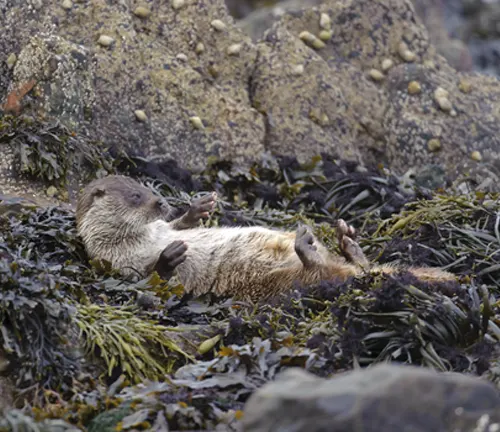
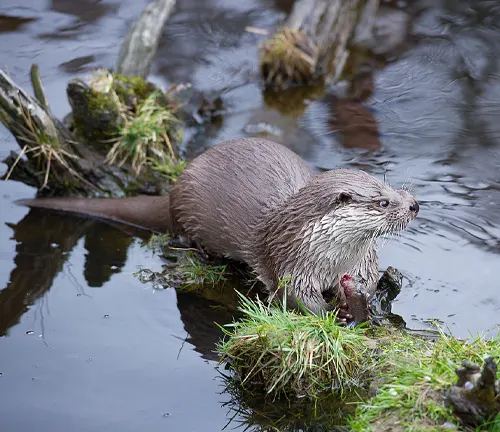
- Habitat Loss and Degradation: The destruction and fragmentation of riparian habitats, such as riverside development, dam construction, and agricultural intensification, pose significant threats to otter populations. Loss of suitable habitat can limit their access to food, shelter, and breeding sites.
- Pollution: Water pollution from agricultural runoff, industrial discharge, and urban waste can contaminate otter habitats, affecting water quality and the availability of prey species. Pollution can also accumulate in otter tissues, leading to health issues and reproductive problems.
- Human Disturbance: Activities such as recreational boating, fishing, and tourism can disturb otters and disrupt their natural behaviors. Excessive noise, disturbance of den sites, and habitat degradation caused by human activities can negatively impact otter populations, particularly in sensitive breeding areas.
- Road Mortality: European otters are vulnerable to road accidents, especially when crossing roads or traversing fragmented habitats. Collisions with vehicles can result in injuries or fatalities, posing a significant threat to otter populations, particularly in areas with high levels of road traffic.
- Illegal Hunting and Poaching: Although hunting and trapping of otters are prohibited in many European countries, illegal poaching still occurs, particularly in areas where otter pelts are valued for fur trade. Poaching and illegal killing of otters can have detrimental effects on local populations, exacerbating existing threats to their survival.
- Climate Change: Climate change poses additional challenges for European otters, affecting their habitats, prey availability, and behavior patterns. Rising temperatures, changes in precipitation patterns, and sea-level rise can alter river flows, water temperatures, and aquatic ecosystems, potentially impacting otter populations and their ability to adapt.
Interesting Facts about European Otters
- European otters are excellent swimmers, capable of diving to depths of up to 60 feet.
- Their playful behavior serves multiple purposes, including social bonding, exercise, and honing hunting skills.
- Otters communicate through a variety of vocalizations, including chirps, whistles, and growls.
- Despite their aquatic lifestyle, otters rely on terrestrial habitats for resting and denning.
Tips for Spotting European Otters
Spotting European otters in the wild can be a thrilling experience for nature enthusiasts. Here are some tips to increase your chances of a sighting:
- Visit rivers, lakes, and coastal areas known for otter activity.
- Look for signs such as footprints, droppings, and scent markings along riverbanks.
- Be patient and observant, scanning the water surface for movement and ripples.
- Consider joining guided wildlife tours or hiring a local naturalist for expert guidance.
- Respect their space and avoid disturbing otters or their habitats.
Different Species
Eurasian Otter
(Lutra lutra)
Also known as the European otter, this species is the most common otter found throughout Europe. It inhabits a wide range of aquatic habitats, including rivers, lakes, and coastal areas.
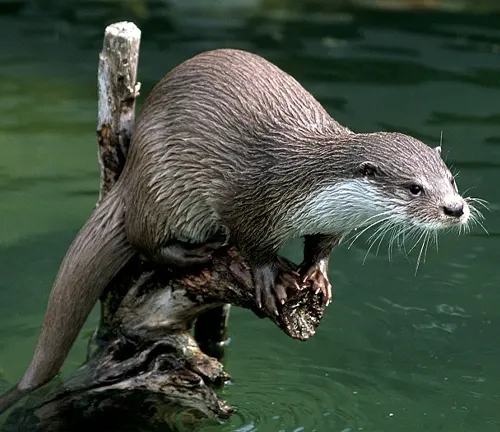
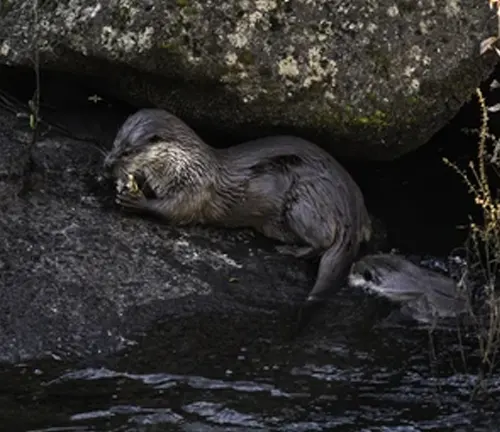
Iberian Otter
(Lutra lutra iberica)
Endemic to the Iberian Peninsula, including Spain and Portugal, the Iberian otter is a subspecies of the Eurasian otter. It is slightly smaller in size compared to its counterparts and is adapted to the unique habitats found in the region.
Alpine Otter
(Lutra lutra alpina)
Found in the Alpine regions of Europe, including parts of Switzerland, Austria, Italy, France, and Germany, the Alpine otter is a subspecies of the Eurasian otter. It has adapted to the colder climate and mountainous terrain of its habitat.
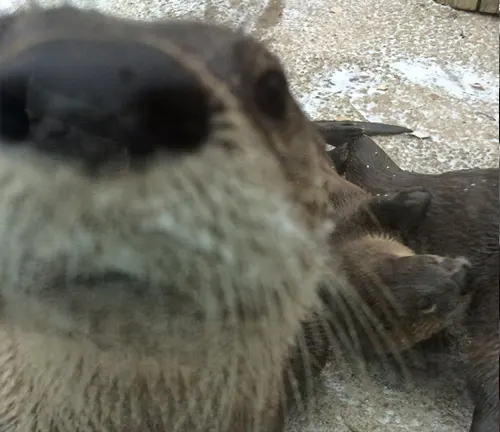
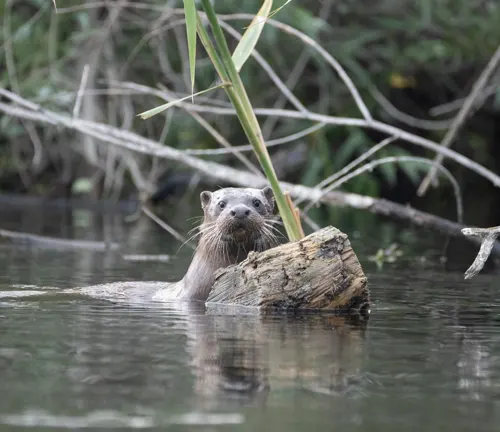
Danube Delta Otter
(Lutra lutra danubica)
Endemic to the Danube Delta in Romania, the Danube Delta otter is a subspecies of the Eurasian otter. It inhabits the wetlands and waterways of the delta, where it plays a vital role in maintaining ecosystem health.
British Otter
(Lutra lutra britannica)
Found in the rivers and water bodies of the British Isles, including England, Scotland, and Wales, the British otter is a subspecies of the Eurasian otter. It has adapted to the diverse habitats found across the region, from fast-flowing rivers to coastal estuaries.
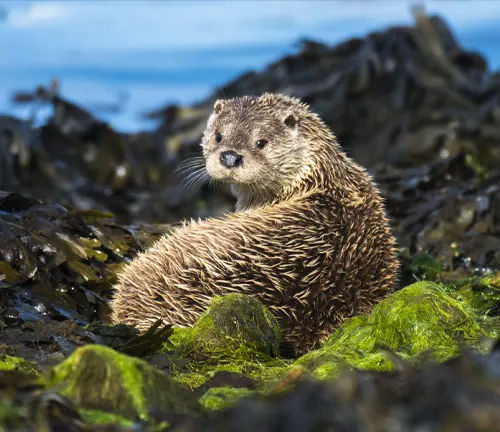
Frequently Asked Questions (FAQs)
- Are European otters endangered?
European otters were once endangered due to habitat loss and pollution, but conservation efforts have led to population recovery in many areas. However, localized threats still exist, and they are classified as a species of “Least Concern” on the IUCN Red List. - What is the average lifespan of a European otter in the wild?
In the wild, European otters typically live for 8 to 10 years, although some individuals have been known to reach 12 years or more. - How many pups does a European otter typically give birth to?
Female European otters typically give birth to litters of two to three pups, although litter sizes can vary. - What are the main threats to European otter populations?
The main threats to European otter populations include habitat loss, pollution, habitat fragmentation, human disturbance, and road accidents. - How do European otters communicate with each other?
European otters communicate with each other through a variety of vocalizations, including chirps, whistles, growls, and screams. They also use scent markings to establish territories and communicate reproductive status. - Do European otters build dams like beavers?
No, European otters do not build dams like beavers. They may modify their habitats by creating burrows, or holts, along riverbanks and shorelines for shelter and protection. - Are European otters territorial animals?
Yes, European otters are territorial animals. They establish territories along riverbanks and coastlines, marking boundaries with scent to deter intruders. - How far do European otters typically travel in search of food?
European otters are known to travel several kilometers in search of food, depending on the availability of prey and the quality of their habitat. - What role do European otters play in their ecosystems?
European otters play a vital role in maintaining the health and balance of aquatic ecosystems. As top predators, they help regulate fish populations and control invertebrate populations, contributing to ecosystem stability. - Do European otters have any natural predators?
European otters have few natural predators as adults due to their size and agility. However, young otters may be vulnerable to predation by larger carnivores such as foxes, wolves, and birds of prey. - How do European otters adapt to cold water environments?
European otters have thick, dense fur and a layer of fat beneath their skin that provides insulation against cold water. They also have a high metabolic rate, which helps them maintain body heat in chilly environments. - What is the relationship between European otters and pollution?
European otters are sensitive to pollution, particularly water pollution from chemicals, pesticides, and heavy metals. Pollution can contaminate their food sources and habitats, leading to health issues and population declines. - Can European otters coexist with humans in urban areas?
Yes, European otters can coexist with humans in urban areas, although they may face challenges such as habitat loss, pollution, and road accidents. Conservation efforts, such as habitat restoration and pollution control, can help mitigate these issues. - What is the significance of European otters in folklore and culture?
European otters hold cultural significance in many societies, symbolizing traits such as playfulness, adaptability, and resilience. They feature prominently in folklore, literature, and art, often portrayed as cunning and intelligent creatures. - Are there any efforts to reintroduce European otters to areas where they have become extinct? Yes, there are ongoing efforts to reintroduce European otters to areas where they have become extinct or have experienced declines in population. These reintroduction programs typically involve habitat restoration, captive breeding, and careful monitoring of released individuals.



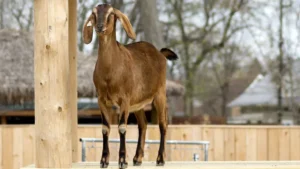

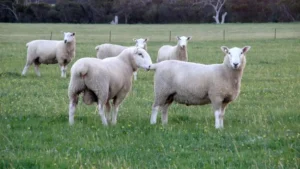
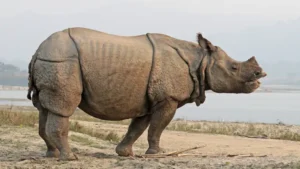


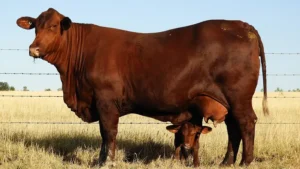
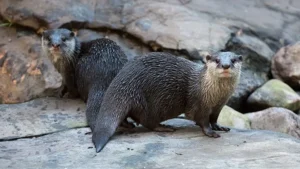
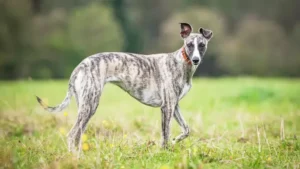

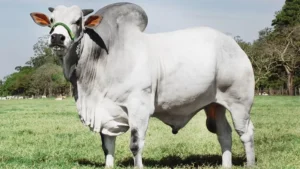
Leave your comment